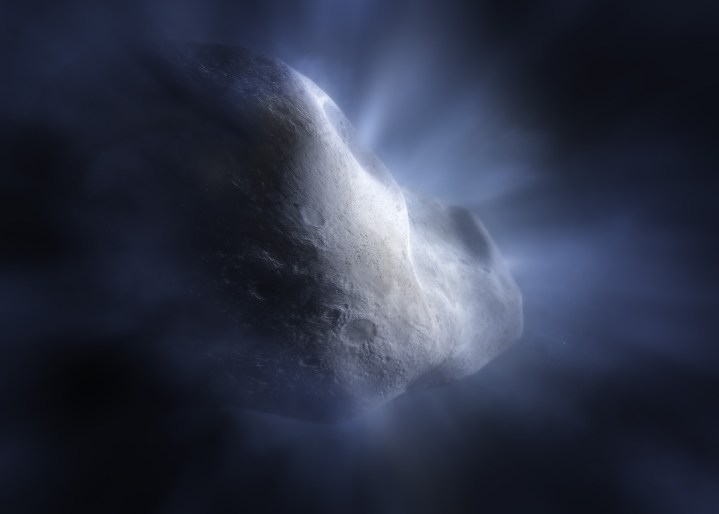As wild as it might sound, scientists have a theory that water on Earth didn’t actually originate here: the first water may have been brought to our planet by a comet. To understand whether that is the case, astronomers look to the comets commonly found in the asteroid belt between Mars and Jupiter, and recent research using the James Webb Space Telescope has identified a clue in this long-standing mystery.
Researchers used Webb’s Near-Infrared Spectrograph instrument to look at the composition of a comet in the asteroid belt, and they found evidence of water vapor around a comet in this area for the first time. Looking at Comet 238P/Read showed nearby vapor, supporting the idea that water could be carried by such a comet. While many comets come from more distant locations like the far-off Oort cloud, which is a long way from the sun where it is easier for water ice to survive, this particular comet hangs out in the main asteroid belt.

That helps astronomers understand how water could have arrived on Earth. “Our water-soaked world, teeming with life and unique in the universe as far as we know, is something of a mystery – we’re not sure how all this water got here,” explained one of the researchers, Stefanie Milam, in a statement. “Understanding the history of water distribution in the solar system will help us to understand other planetary systems, and if they could be on their way to hosting an Earth-like planet.”
“With Webb’s observations of Comet Read, we can now demonstrate that water ice from the early solar system can be preserved in the asteroid belt,” said fellow researchers Michael Kelly.
However, there was something odd about the data from this comet. While the results showed water vapor was present, there wasn’t any carbon dioxide detected, which had been expected. Comets usually carry around 10% carbon dioxide, so it’s odd not to find any. It might be that the comet formed in an unusually warm area where carbon dioxide wasn’t present, or it could be that the comet used to have carbon dioxide but lost it over time as it warmed.
To find out more, the researchers want to look at more comets in the asteroid belt to see if they have similar compositions — something that is now possible thanks to Webb’s powerful instruments.
“These objects in the asteroid belt are small and faint, and with Webb, we can finally see what is going on with them and draw some conclusions. Do other main belt comets also lack carbon dioxide? Either way, it will be exciting to find out,” said co-author Heidi Hammel.
The research is published in the journal Nature.
Editors' Recommendations
- James Webb telescope gets a view of the ‘white whale’ of exoplanet research
- James Webb detects water vapor in rocky planet’s atmosphere — maybe
- James Webb captures stunning image of supernova remnant Cassiopeia A
- James Webb spots exoplanet with gritty clouds of sand floating in its atmosphere
- Astronomers share early images from James Webb’s galaxy survey




